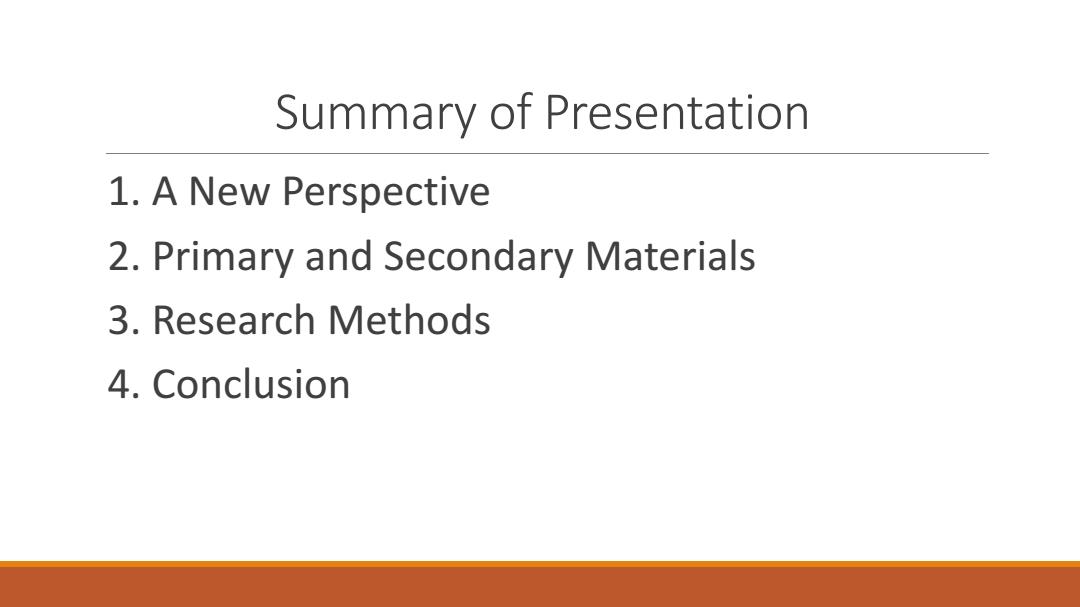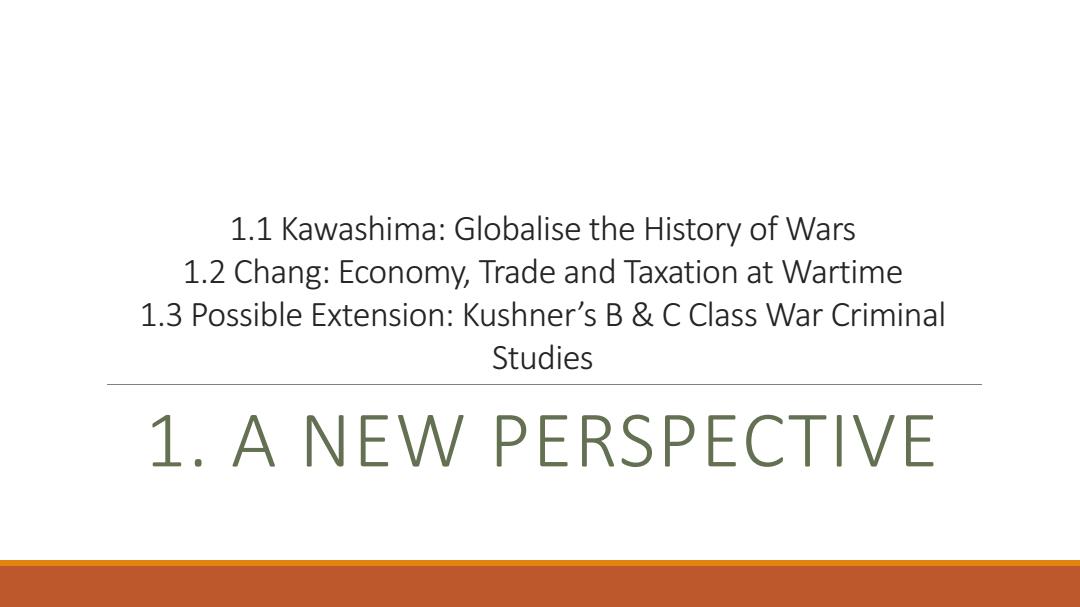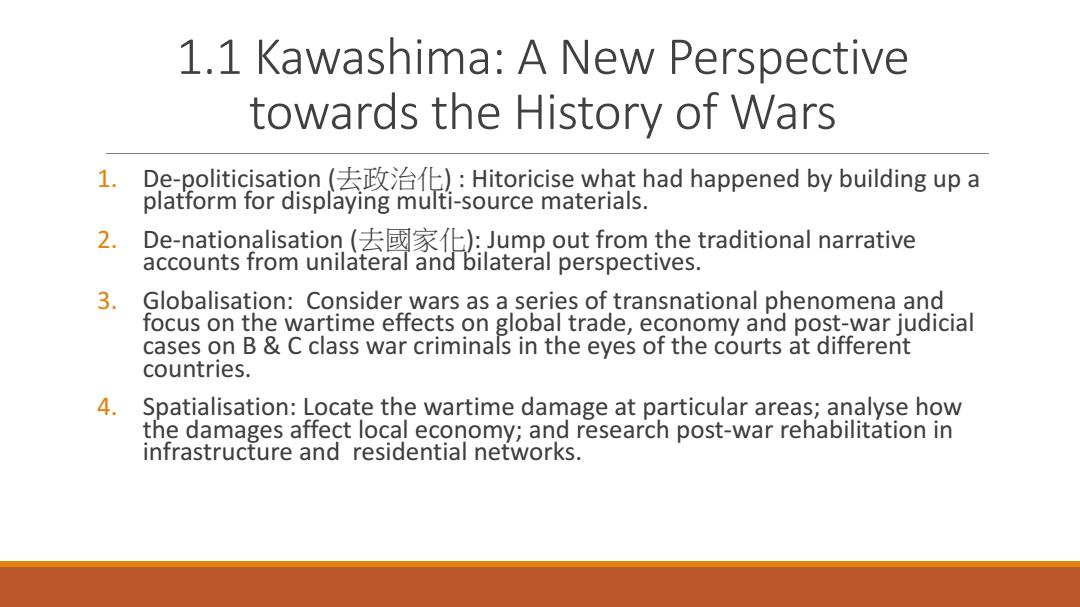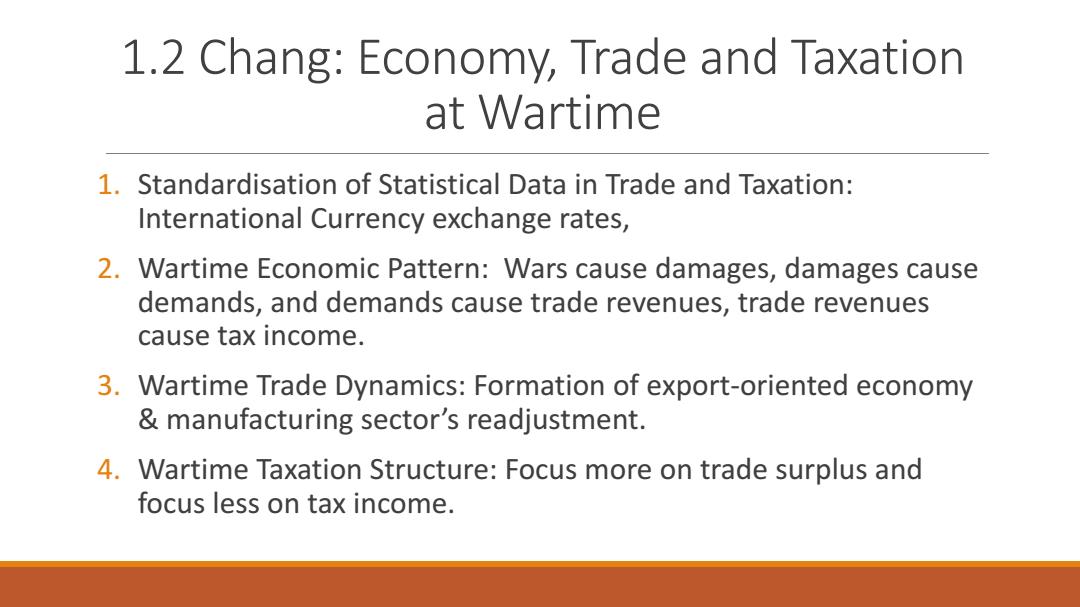
What's the Battle of Shanghai:new trial to research Sino- Japanese War by GIs PROFESSOR KAWASHIMA SHIN DR CHIHYUN CHANG
What’s the Battle of Shanghai: new trial to research Sino- Japanese War by GIS PROFESSOR KAWASHIMA SHIN DR CHIHYUN CHANG

Summary of Presentation 1.A New Perspective 2.Primary and Secondary Materials 3.Research Methods 4.Conclusion
Summary of Presentation 1. A New Perspective 2. Primary and Secondary Materials 3. Research Methods 4. Conclusion

1.1 Kawashima:Globalise the History of Wars 1.2 Chang:Economy,Trade and Taxation at Wartime 1.3 Possible Extension:Kushner's B&C Class War Criminal Studies 1.A NEW PERSPECTIVE
1.1 Kawashima: Globalise the History of Wars 1.2 Chang: Economy, Trade and Taxation at Wartime 1.3 Possible Extension: Kushner’s B & C Class War Criminal Studies 1. A NEW PERSPECTIVE

1.1 Kawashima:A New Perspective towards the History of Wars 1. De-politicisation ()Hitoricise what had happened by building up a platform for displaying multi-source materials. 2.De-nationalisation(去國家化:Jump out from the traditional narrative accounts from unilateral and bilateral perspectives. 3. Globalisation:Consider wars as a series of transnational phenomena and focus on the wartime effects on global trade,economy and post-war judicial cases on B&C class war criminals in the eyes of the courts at different countries. 4.Spatialisation:Locate the wartime damage at particular areas;analyse how the damages affect local economy;and research post-war rehabilitation in infrastructure and residential networks
1.1 Kawashima: A New Perspective towards the History of Wars 1. De-politicisation (去政治化) : Hitoricise what had happened by building up a platform for displaying multi-source materials. 2. De-nationalisation (去國家化): Jump out from the traditional narrative accounts from unilateral and bilateral perspectives. 3. Globalisation: Consider wars as a series of transnational phenomena and focus on the wartime effects on global trade, economy and post-war judicial cases on B & C class war criminals in the eyes of the courts at different countries. 4. Spatialisation: Locate the wartime damage at particular areas; analyse how the damages affect local economy; and research post-war rehabilitation in infrastructure and residential networks

1.2 Chang:Economy,Trade and Taxation at Wartime 1.Standardisation of Statistical Data in Trade and Taxation: International Currency exchange rates, 2.Wartime Economic Pattern:Wars cause damages,damages cause demands,and demands cause trade revenues,trade revenues cause tax income. 3.Wartime Trade Dynamics:Formation of export-oriented economy manufacturing sector's readjustment. 4.Wartime Taxation Structure:Focus more on trade surplus and focus less on tax income
1.2 Chang: Economy, Trade and Taxation at Wartime 1. Standardisation of Statistical Data in Trade and Taxation: International Currency exchange rates, 2. Wartime Economic Pattern: Wars cause damages, damages cause demands, and demands cause trade revenues, trade revenues cause tax income. 3. Wartime Trade Dynamics: Formation of export-oriented economy & manufacturing sector’s readjustment. 4. Wartime Taxation Structure: Focus more on trade surplus and focus less on tax income